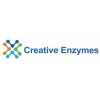Cat No.
CEI-0010
Description
As a selective FGFR1TK inhibitor, PD173074 displayed selective inhibitory activity towards FGFR1 at 26 nM.
CAS No.
219580-11-7
Targets
FGFR1
Chemical Name
1-tert-butyl-3-(2-(4-(diethylamino)butylamino)-6-(3,5-dimethoxyphenyl)pyrido[2,3-d]pyrimidin-7-yl)urea
M.Wt
523.67
Purity
>99%
Solubility
DSMO 105 mg/mL Water
Storage
2 years at -20 centigrade
In vitro
As a selective FGFR1TK inhibitor, PD173074 displayed selective inhibitory activity towards FGFR1TK at 26 nM. PD173074 inhibited the formation of microcapillaries on Matrigel-coated plastic. PD173074 demonstrated (>100 fold) selective growth inhibitory action towards human umbilical vein endothelial cells compared with a panel of tumor cell lines. In vivo anti-angiogenesis studies in mice revealed that oral administration of PD173074 (25-100 mg/kg) generated dose dependent inhibition of angiogenesis. (1) Oligodendrocyte (OL) lineage cells PD173074 can inhibit growth of OL-lineage cells by inhibiting FGF receptor signaling, as migration, proliferation, and differentiation of oligodendrocyte (OL) lineage cells are influenced by fibroblast growth factor-2 (FGF-2) signaling through its receptors (FGFR) FGFR-1, FGFR-2, and FGFR-3. PD173074 effectively antagonized the effect of FGF-2 on proliferation and differentiation of OL progenitors in culture, while platelet-derived growth factor (PDGF)-induced proliferation was unaffected by PD173074. In the same way, mitogen-activated protein kinase (MAPK) activation, a downstream event after activation of either FGFR or PDGFR, was also blocked by PD173074 in OL progenitors stimulated with FGF-2 but not PDGF. PD173074 also completely antagonized two phenotypic alterations of differentiated OLs, specifically downregulation of myelin proteins, and their re-entry into the cell cycle. We conclude that PD173704 is an effective and specific inhibitor for multiple FGF-2-mediated responses of both OL progenitors and differentiated OLs. (2) MM lines PD173074 specifically inhibited the growth of the two t(4;14)-positive MM lines, KMS-11 and OPM-2. PD173074 induced a dose-dependent reduction in cell viability and an increase in apoptosis, accompanied by a decrease in extracellular signal-related kinase phosphorylation. (3) SCLC cells As fibroblast growth factor-2 induces proliferation and chemoresistance in SCLC cells, PD173074 blocks H-510 and H-69 SCLC proliferation and clonogenic growth in a dose-dependent fashion and prevents FGF-2-induced chemoresistance. (4) UC cell lines PD173074 suppressed cell proliferation remarkably in two UC cell lines, UM-UC-14 and MGHU3, which expressed mutated FGFR3 protein. The growth inhibitory effect of PD173074 was associated with arrest at G(1)-S transition in a dose-depending manner. After PD173074 treatment, an inverse relationship between Ki-67 and p27/Kip1 expression suggests that up-regulation of p27 recruited UC cells harboring activating FGFR3 mutations in G(1) that was analogous with the other receptor TKIs acting on the epidermal growth factor receptors.





